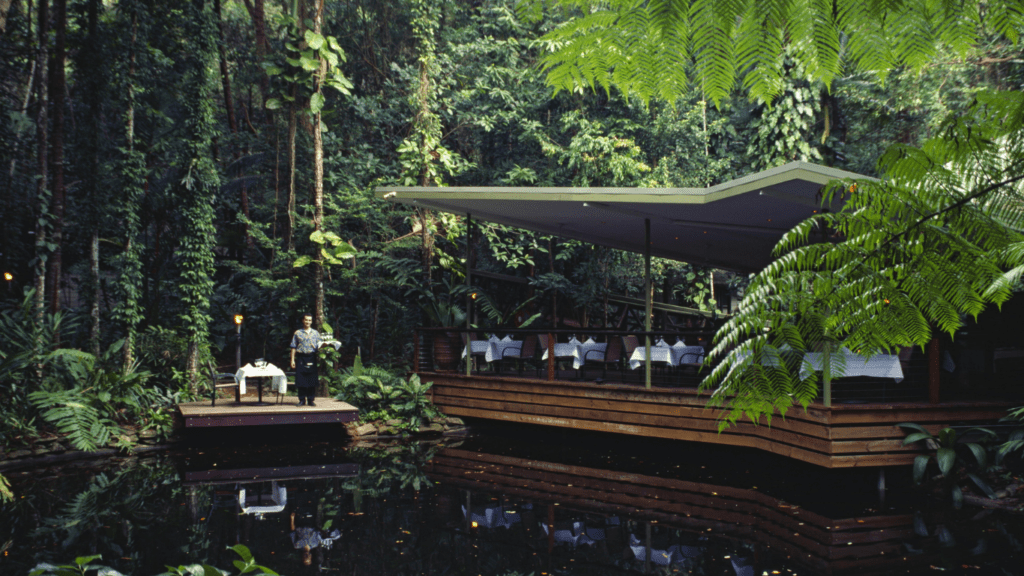Nestled in the heart of Japan, Niseko beckons travelers with its pristine landscapes and snow-capped mountains. As an avid advocate for sustainable tourism, I’m excited to delve into the eco-friendly practices and initiatives that make Niseko a shining example of responsible travel. From reducing carbon footprints to promoting local conservation efforts, this article explores how Niseko is paving the way for a greener, more sustainable future in the travel industry.
Join me on a journey through Niseko’s commitment to preserving its natural beauty while offering unforgettable experiences for visitors. Discover how this charming destination is striking a balance between tourism and environmental conservation, setting a benchmark for other popular travel spots worldwide. Let’s uncover the innovative strategies and initiatives that are shaping Niseko into a model of sustainable tourism excellence.
Exploring Sustainable Tourism in Niseko
Starting with a focus on sustainable tourism practices, it’s essential to understand the concept of eco-friendly tourism. This approach emphasizes responsible travel that minimizes the negative impacts on the environment and local communities. Sustainable tourism aims to preserve natural resources, support cultural heritage, and provide economic benefits to local residents.
Understanding the Concept of Eco-Friendly Tourism
Eco-friendly tourism, also known as sustainable tourism, prioritizes the conservation of natural ecosystems and cultural heritage. It involves engaging in activities that respect the environment, support local communities, and promote biodiversity. By adopting sustainable practices, destinations like Niseko contribute to the long-term well-being of the region and create immersive experiences for visitors.
Why Niseko is a Focus for Sustainable Initiatives
Niseko stands out as a hub for sustainable initiatives due to its commitment to environmental conservation and community engagement. The region’s stunning landscapes and rich biodiversity underscore the importance of preserving its natural assets. By implementing eco-friendly practices and promoting responsible tourism, Niseko sets a high standard for sustainable tourism in Japan and globally.
Key Eco-Friendly Practices in Niseko’s Tourism
In Niseko, sustainable tourism practices are integral to preserving the region’s beauty and supporting local conservation. Key eco-friendly initiatives focus on waste management, recycling efforts, and energy conservation to reduce environmental impact significantly while enhancing visitor experiences.
- Waste Management and Recycling Efforts
I prioritize waste management and recycling in Niseko’s tourism sector to minimize environmental harm and promote sustainability. Recycling facilities are easily accessible, and waste separation is encouraged to ensure proper disposal of recyclables and reduce landfill waste. By actively engaging visitors and businesses in recycling programs, Niseko maintains a clean environment and upholds its commitment to eco-conscious practices. - Energy Conservation Measures
I implement energy conservation measures across Niseko to reduce carbon emissions and lower energy consumption. From energy-efficient lighting in accommodations to promoting public transport and encouraging responsible water usage, Niseko embraces sustainable energy practices. By investing in renewable energy sources like solar power and promoting energy-saving initiatives, the region leads by example in sustainable tourism efforts.
Community Involvement and Sustainable Tourism

As a hub for sustainable tourism, Niseko thrives on community involvement to bolster its eco-friendly practices.
The Role of Local Businesses in Promoting Sustainability
Local businesses in Niseko play a pivotal role in advancing sustainability within the region. By adopting eco-friendly initiatives such as reducing single-use plastics, promoting sustainable local sourcing, and integrating green technologies, these establishments set the benchmark for responsible tourism practices. Through collaborations with environmental organizations and participation in community clean-up drives, Niseko’s local businesses actively contribute to preserving the natural beauty of the area while offering visitors a greener and more sustainable travel experience.
Tourists’ Participation in Sustainable Practices
Tourists visiting Niseko are encouraged to actively engage in sustainable practices to support the destination’s conservation efforts. By respecting the local culture and environment, minimizing waste generation, and supporting local businesses that prioritize sustainability, travelers become integral partners in Niseko’s eco-conscious journey. Participation in eco-tours, volunteering for environmental projects, and practicing responsible tourism behaviors like using public transportation or biking not only enhance the overall travel experience but also contribute to the long-term preservation of Niseko’s pristine landscapes.
Challenges and Opportunities for Sustainable Tourism in Niseko
Exploring the challenges and opportunities for sustainable tourism in Niseko reveals a dynamic landscape focused on preserving its natural beauty while accommodating increasing visitor numbers. Addressing over-tourism with sustainable solutions is crucial to maintaining the delicate balance between environmental conservation and tourism growth. Furthermore, identifying future prospects for eco-tourism will play a significant role in shaping Niseko’s sustainable development trajectory.
Addressing Over-Tourism with Sustainable Solutions
Mitigating the impacts of over-tourism in Niseko necessitates innovative sustainable solutions that prioritize environmental preservation and visitor enjoyment. By implementing carrying capacity limits, regulating visitor numbers during peak seasons, and promoting responsible travel behaviors, Niseko can ensure a harmonious coexistence between tourism activities and ecological stability. Sustainable solutions such as eco-friendly transportation options, promoting off-peak travel, and collaborative efforts with local communities are essential steps in managing over-tourism sustainably.
Future Prospects for Eco-Tourism
The future prospects for eco-tourism in Niseko are promising, with a growing emphasis on promoting nature-based experiences, eco-conscious accommodations, and outdoor activities that respect the region’s natural environment. Embracing sustainable practices like green building certifications, wildlife conservation initiatives, and eco-friendly tour packages will enhance Niseko’s appeal to environmentally conscious travelers. Leveraging technology for sustainable tourism marketing, fostering partnerships with eco-conscious brands, and continuing to engage visitors in conservation efforts will solidify Niseko’s position as a leading eco-tourism destination.

 Charleson Youngoron
Is the visionary founder of Winder Sportisa, a company dedicated to excellence in the sports industry. With a passion for both sports and business, Charleson has combined his extensive knowledge and experience to create a dynamic organization that prioritizes community, integrity, and innovation. Under his leadership, Winder Sportisa has grown into a respected name, known for its commitment to creating an inclusive and supportive environment. Charleson's dedication to these core values has been instrumental in shaping the company's culture and guiding its success. His forward-thinking approach and unwavering commitment to quality continue to drive Winder Sportisa to new heights.
Charleson Youngoron
Is the visionary founder of Winder Sportisa, a company dedicated to excellence in the sports industry. With a passion for both sports and business, Charleson has combined his extensive knowledge and experience to create a dynamic organization that prioritizes community, integrity, and innovation. Under his leadership, Winder Sportisa has grown into a respected name, known for its commitment to creating an inclusive and supportive environment. Charleson's dedication to these core values has been instrumental in shaping the company's culture and guiding its success. His forward-thinking approach and unwavering commitment to quality continue to drive Winder Sportisa to new heights.
